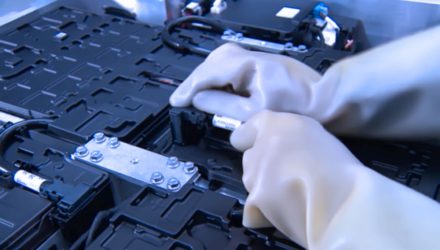As the world looks to decarbonize and rely less on fossil fuels, this will help feed into more strength for alternative energy sources like electricity. That, in turn, will fuel more growth in lithium-ion cell manufacturing, which is expected to quadruple by the year 2030, according to a new report by Wood Mackenzie.
Per a Mining.com article, “the global lithium-ion cell manufacturing capacity pipeline could rise fourfold to reach 1.3 terawatt-hours (TWh) in 2030 compared to 2019, a new report by Wood Mackenzie states. This total capacity refers to 119 battery manufacturing facilities that are operational, under construction or announced by more than 50 vendors.“
In terms of where this growth will be concentrated, Asia is leading the way.
“Manufacturing capacity in Asia Pacific accounts for 80% of the global capacity pipeline. The region will remain as the leader of lithium-ion battery production for the next decade,” Wood Mackenzie senior analyst Mitalee Gupta said.
“Within Asia Pacific, China dominates the pipeline capacity and is expected to double its capacity from 345 gigawatt-hour (GWh) in 2020 to more than 800 GWh by 2030.”
Exchange-traded funds (ETFs) to consider to capitalize on this growing trend include the Global X Lithium & Battery Tech ETF (NYSEArca: LIT). LIT seeks to provide investment results that correspond generally to the price and yield performance of the Solactive Global Lithium Index.
The fund invests at least 80% of its total assets in the securities of the underlying index and in American Depositary Receipts (“ADRs”) and Global Depositary Receipts (“GDRs”) based on the securities in the underlying index. The underlying index is designed to measure broad-based equity market performance of global companies involved in the lithium industry.
A Backdoor Play on Lithium
Lithium-ion battery capacity is vital because one of the primary factors car buyers consider when evaluating electric vehicles is how long those vehicles can run on a single charge. Tesla’s dominance in the booming electric vehicle market will also move the demand for lithium.
As such, investors can make an indirect play on lithium growth via electric cars with the Global X Autonomous & Electric Vehicles ETF (NYSEArca: DRIV). DRIV seeks to provide investment results that correspond generally to the price and yield performance, before fees and expenses, of the Solactive Autonomous & Electric Vehicles Index.
DRIV provides:
- High Growth Potential: DRIV enables investors to access high growth potential through companies critical to the development of autonomous and electric vehicles – a potentially transformative economic innovation.
- Unconstrained Approach: DRIV’s composition transcends classic sector, industry, and geographic classifications by tracking an emerging technological theme.
- ETF Efficiency: In a single trade, DRIV delivers access to dozens of companies with high exposure to the autonomous and electric vehicles theme.
For more market trends, visit ETF Trends.


